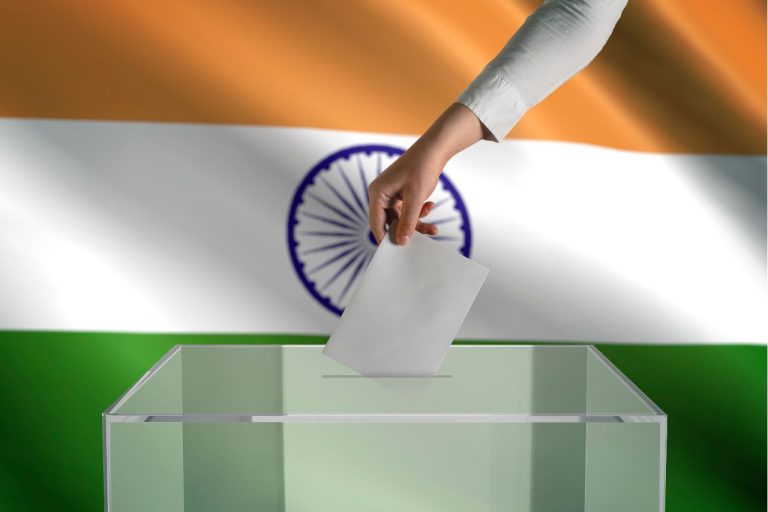New Delhi: India’s apparel industry has gained significant traction in the global market, particularly in the United States, thanks to its growing reputation for stability, both politically and economically. A recent report from the U.S. International Trade Commission (USITC) reveals that India’s political stability is a driving force behind U.S. buyers’ increasing reliance on the country for high-value fashion apparel. As the global garment supply chain faces numerous challenges, India is emerging as a preferred sourcing destination, with its predictable production timelines and low risk of political disruptions.
India’s Growing Share in U.S. Apparel Imports
India’s presence in the U.S. apparel import market has steadily increased over the past decade. In 2013, India accounted for just 4% of U.S. apparel imports, a figure that has now grown to 5.8% by 2023. This rise is a testament to India’s competitive positioning, particularly in the high-value fashion segment. As U.S. buyers seek to diversify their sourcing options away from China, India has become a reliable alternative, offering both quality and dependability in garment production.
Political Stability: A Crucial Factor in Apparel Sourcing
In the apparel industry, political instability can disrupt supply chains, delaying production and affecting delivery schedules. The USITC report highlights how countries like Bangladesh, plagued by political unrest, have become less appealing to U.S. buyers. On the other hand, India’s relatively stable political environment has made it an attractive option for sourcing apparel. American buyers are increasingly confident in India’s ability to fulfill orders on time and to a high standard, especially for high-end fashion items that demand precision and quality
Key Strengths of India’s Apparel Production
India’s competitive edge in the global apparel market lies in several key factors:
1. Vertical Integration:
India’s textile industry is highly vertically integrated, covering all stages of production from cotton farming to garment manufacturing. This self-sufficiency minimizes dependency on external suppliers, ensuring greater control over production timelines and quality.
2. Skilled Workforce:
India boasts a large and skilled labor force, particularly adept in high-quality garment finishing. This expertise makes India a top choice for producing fashion-forward, premium garments that cater to global trends.
3. Government Support:
The Indian government has rolled out initiatives like the Production Linked Incentive (PLI) Scheme to boost domestic manufacturing. These policies are designed to enhance production capacity, encourage innovation, and strengthen India’s position as a key global apparel supplier.
4. Cotton Production:
India is one of the largest cotton producers in the world, giving it a natural advantage in manufacturing cotton-based garments. The country’s abundant cotton supply helps meet global demand for quality cotton apparel.
5. Growing Exports:
India’s apparel exports to the U.S. reached $4.6 billion in 2023, making it the fourth-largest supplier of apparel to the U.S. market. This growing export value demonstrates the increasing trust U.S. buyers place in Indian-made garments.
Competitive Landscape: India vs. Other Suppliers
The USITC report also compares India with other major suppliers of apparel to the U.S., such as Vietnam, Bangladesh, Indonesia, and Pakistan. While Vietnam holds the largest market share at 17.8%, India remains competitive, with its vertical integration and skilled labor force offering significant advantages. However, challenges like rising labor costs and infrastructure issues could hinder future growth, positioning India as a competitive yet evolving player in the global apparel market.
| Supplier |
U.S. Market Share in Apparel Imports (2023) |
Key Strengths |
Challenges |
| Vietnam |
17.8% |
Expertise in cotton & MMF garments |
Increasing labor costs, limited domestic cotton production |
| Bangladesh |
6.2% |
Low labor costs, duty-free access to U.S. |
Political instability, limited high-value products |
| India |
5.8% |
Vertical integration, skilled labor, government support |
Rising labor costs, infrastructure challenges |
| Indonesia |
8.5% |
High-quality complex garments |
High production costs, logistical inefficiencies |
| Pakistan |
4.5% |
Strong cotton sector, quality denim |
Geopolitical risks, limited diversification |
Looking Ahead: India’s Future in Global Apparel Market
With political stability, a robust manufacturing infrastructure, and strong government support, India’s apparel sector is poised for continued growth in the U.S. and global markets. As U.S. buyers increasingly prioritize reliability, India’s ability to deliver high-quality, time-sensitive apparel makes it a standout option for future sourcing needs.
Input from PIB, NEW DELHI
Web Team, C6N










